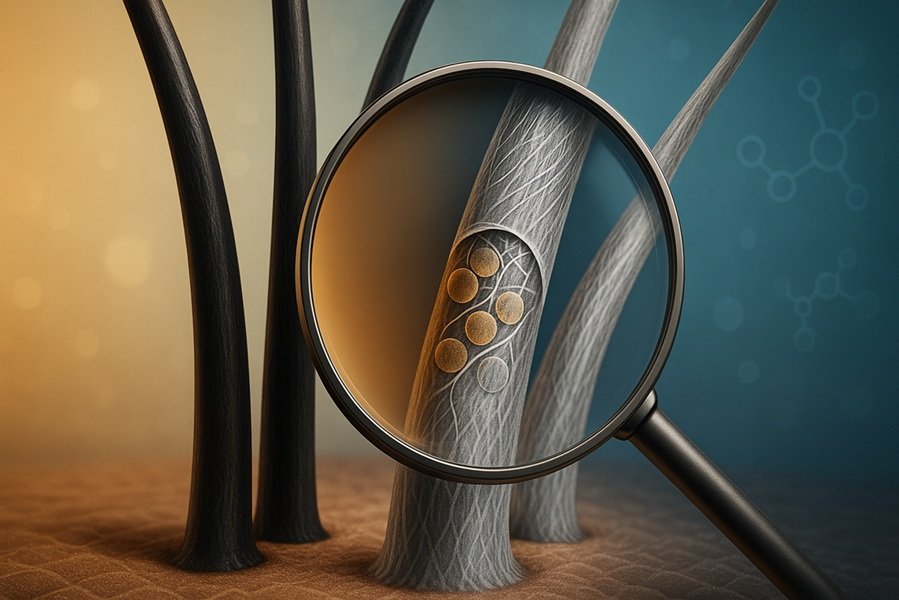
Introduction
Air defence today is a system of systems — layered sensors, overlapping shooters and integrated command-and-control (C2). Comparing single systems as “better” or “worse” misses the point: each system is designed for particular layers, threats and operational concepts. This article gives a technical comparison of four headline systems — Russia’s S-400 Triumf, the U.S. Patriot (PAC-3 / PAC-3 MSE), Israel’s Iron Dome, and the U.S. THAAD — across radar capability, missile performance (range & speed), mobility, interception layers (role in a layered defence), and then explains how the S-400 fits into India’s overall air-defence doctrine and force structure. Key factual claims are cited to authoritative sources.
Executive summary — quick contrast
- S-400 Triumf: Long-range, multi-missile family designed to engage aircraft, cruise missiles and some ballistic missiles; acts as a high-to-medium altitude, long-reach layer in a national/regional AD network. (Wikipedia)
- Patriot (PAC-3 / PAC-3 MSE): Mobile U.S. theatre/high-medium AD system optimized for terminal-phase ballistic missile defence (with PAC-3 hit-to-kill capability) and high-value air target protection; widely exported. (Reuters)
- Iron Dome: Short-range, extremely fast reaction, high-density-salvo counter-rocket/artillery/short-range-missile (C-RAM/SHORAD) system; optimized for cost-effective interception of unguided rockets and some tactical missiles. (Rafael)
- THAAD: Very high-altitude, terminal-phase anti-ballistic missile interceptor designed specifically to destroy short- to intermediate-range ballistic missiles outside the atmosphere (exo/endo-atmospheric terminal engagements). (Lockheed Martin)
(Throughout the article the most load-bearing technical claims are footnoted to public manufacturer/defense analyst sources.)
1. Radar & sensor capability — detection, tracking, cueing
S-400
- S-400 batteries are built around multiple radars: long-range acquisition (e.g., 92N6E multi-function radar), panoramic/tracking radars and low-altitude detectors. Public sources cite detection/targeting ranges up to ~300–400 km for strategic aerodynamic targets (actual detection depends on radar model, target RCS and altitude). The S-400 suite can also incorporate high-altitude VHF and other sensors for early detection. (Wikipedia)
Patriot (PAC-3 family)
- Patriot’s radars (AN/MPQ-53/65 family for earlier variants and advanced AESA upgrades) serve both acquisition and track-while-scan roles with effective engagement/radar track ranges on the order of hundreds of kilometres for detection, but effective engagement depends on missile variant and engagement geometry. Patriot’s C2 and AESA radar improvements over time have enhanced multi-target track capacity and discrimination for ballistic targets. (Reuters)
Iron Dome
- Iron Dome’s EL/M-2084 radar (Elta/IAI) is a highly responsive short-range 3D surveillance and fire-control radar designed to detect rocket/rocket-salvo launches and compute trajectories rapidly to determine impact points. It is optimized for short-range, fast-reaction tracking rather than long-range look-down detection. Iron Dome processes threats in seconds and prioritizes only rockets predicted to hit protected areas. (Rafael)
THAAD
- THAAD uses the AN/TPY-2 X-band radar — a very high-resolution, long-range tracking sensor optimized for ballistic missile discrimination and precision tracking during midcourse/terminal phases. The AN/TPY-2 provides long detection ranges (sensor employment mode dependent) and excellent resolution for kill-vehicle cueing. (Lockheed Martin)
Takeaway (sensors): S-400 and Patriot are multi-role AESA/Phased-array systems that balance long-range detection and engagement; Iron Dome is a short-range, rapid-response sensor–shooter pair; THAAD specializes in very high-resolution ballistic missile tracking rather than general air policing.
2. Missile families — range, speed, seeker type
Note: these systems use families of interceptors. “Range” and “speed” values vary with missile variant and with engagement altitude/target type.
S-400 missiles (family overview)
- The S-400 can employ multiple missile types in the same battery: 40N6 (very long range, reported up to ~400 km targeting aerodynamic targets under ideal conditions), 48N6 (100–250+ km variants), 9M96 / 9M96E2 (shorter range, high maneuverability) and others. Reported maximum target speeds and intercept capabilities include engagements against high-speed ballistic targets; public technical tables list target-speed handling up to ~4.8 km/s (≈Mach 14) for some ballistic targets and missile maximum velocities vary by interceptor (40N6, 48N6, 9M96 series). (Wikipedia)
Patriot (PAC-3 / PAC-3 MSE)
- Patriot uses two broad engagement families: PAC-2 (blast-fragmentation warhead, longer reach vs. aircraft/cruise missiles) and PAC-3 / PAC-3 MSE (hit-to-kill kinetic interceptors optimized for terminal ballistic missile defence). PAC-3 MSE increases range and maneuverability over earlier PAC-3s. PAC-3 missiles are highly maneuverable and designed for direct-hit kinetic intercepts against tactical ballistic missiles in the terminal phase. Speed: PAC family interceptors reach hypersonic terminal speeds in the engagement window; PAC-3 listed velocities are consistent with terminal interception requirements. (Reuters)
Iron Dome (Tamir interceptor)
- Tamir interceptors are short-range, highly maneuverable missiles optimized to intercept unguided rockets, mortar shells and short-range rockets. Typical engagement ranges are up to ~70 km for the system envelope, but operationally Iron Dome engages rockets at short ranges (several kilometres to a few dozen kilometres) depending on launcher siting and threat trajectory. Tamir uses guided electro-optical/seeker components for terminal homing. Iron Dome emphasizes high hit probability with smart selection of which rockets to engage. (Rafael)
THAAD interceptor
- THAAD uses a hit-to-kill kinetic interceptor with very high closure speeds to strike ballistic reentry/terminal vehicles outside or at the edge of the atmosphere — ceiling and engagement altitudes are much higher than S-400/Patriot aerodynamic engagement envelopes (THAAD ceiling quoted very high; AN/TPY-2-guided intercept at tens of km to above 100 km depending on trajectory). THAAD interceptor speeds and kill-vehicle performance are optimized for exo/endo-atmospheric terminal interception. (Lockheed Martin)
Takeaway (missiles):
- S-400: intends breadth — multi-type interceptors from short to very long ranges (including some capacity vs. ballistic targets).
- Patriot: theater ADS with strong terminal ballistic missile capability in PAC-3 MSE and area air defence vs. aircraft/cruise missiles.
- Iron Dome: niche short-range C-RAM / SHORAD designed to be economical and selective.
- THAAD: narrow ballistic missile terminal-phase specialist with very high altitude intercept capability.
3. Mobility, deployment and logistical footprint
S-400
- S-400 is mobile at the battery/regiment level — TELs, command vehicles and radar units are road-transportable. Time to be fully operational after displace varies by source (some components are road-mobile with minutes to tens of minutes readiness). However, S-400 batteries are large (many heavy vehicles) and require logistic support (fuel, spare missiles, trained crews). For regional coverage you need multiple batteries; procurement cost and footprint are substantial. (Wikipedia)
Patriot
- Patriot is a transportable, mobile system engineered for expeditionary use. Patriot batteries include radar vans, launchers, and support vehicles — mobility and logistic tail suit allied fielding and rapid redeployment (though moving a battery is a multi-vehicle exercise). Exported widely and operated with established support infrastructure in many countries. (Reuters)
Iron Dome
- Iron Dome batteries are relatively compact and mobile (mobile launchers and radar elements), optimized for rapid emplacement near population centers. Logistics are lighter than strategic long-range systems but interceptor inventory is consumed quickly in high-rate rocket salvos, requiring re-supply chains. (Rafael)
THAAD
- THAAD uses large transporter-erector-launchers and a substantial radar (AN/TPY-2). Mobility exists (mounted on heavy trucks) but deployments are strategic, not tactical — footprint and logistic needs are significant and typically protected/hosted by allied bases. (Lockheed Martin)
Operational implication: Mobility is necessary but not sufficient — S-400 and Patriot are mobile area defences (heavy footprint), Iron Dome is highly deployable close to civic areas, THAAD is a high-value strategic asset.
4. Interception layers — how these systems complement each other
Modern national air defence uses a layered approach:
- VSHORAD / MANPADS / short-range air defence (e.g., Akash short-range, Spyder, VSHORAD in India) — protects point/very low altitude (troops, small areas).
- SHORAD & C-RAM (e.g., Iron Dome niche) — counters rockets, artillery, short missiles and UAVs at short ranges. (Rafael)
- Medium/Long-range SAMs (Patriot PAC-2/3, S-400) — protect regions, critical infrastructure and provide area denial against aircraft/cruise missiles; also can contribute to theatre missile defence. (Wikipedia)
- High-altitude ballistic missile defence (THAAD, BMD systems) — intercept terminal ballistic trajectories at high altitude or exo-atmospheric stages. (Lockheed Martin)
- Iron Dome sits at the short, dense end: cheap-per-intercept relative to using high-cost PATRIOT or S-400 missiles on fireworks/rockets. Its battle manager decides which rockets threaten assets before launching. (Rafael)
- Patriot and S-400 both operate in overlapping medium-to-long ranges, but differ in doctrine and missile families: Patriot’s PAC-3 emphasizes terminal BMD and high-value asset defence with kinetic interceptors; S-400 emphasizes layered missile choices to address aircraft, cruise missiles and some ballistic targets at greater ranges. (Wikipedia)
- THAAD plugs the high-altitude terminal ballistic missile gap that neither S-400 nor Patriot would reliably cover alone for some trajectories. Integration of THAAD and Patriot provides multi-layer ballistic defence (mid/terminal).
Key systems complement: In a mature architecture you want short-range C-RAM (Iron Dome-like) + medium-range SAM (Patriot/S-400/Barak-8/Akash) + high-altitude BMD (THAAD / dedicated BMD) + sensors (early warning radars, AWACS, satellite cueing).
5. How S-400 fits into India’s doctrine and force structure
Acquisition & deployment context
- India signed a contract for five S-400 regiments in 2018 and began receiving/regimenting units in the early-to-mid-2020s as part of a larger push to modernize and harden national air defences. Deliveries have been incremental and remain part of a larger multi-vendor, multi-layered air defence architecture (indigenous and imported systems). Recent reporting indicates Russia and India discussing further deliveries and remaining deliveries expected by mid-2020s. (Wikipedia)
Doctrine — deterrence, area denial and layered defence
- Strategic role: S-400 provides India an extended-range, high-end area-denial capability — protecting wide swathes of territory, critical infrastructure and sea approaches. Its very long-range missiles (40N6 family) can engage targets far from coastline or borders, thereby expanding India’s anti-access/area-denial (A2/AD) envelope in a regional crisis. (Wikipedia)
- Layering: India’s approach is explicitly layered: VSHORAD & point defenses (MANPADS, AKASH), short-range C-RAM/SHORAD in urban/coastal areas (Israeli systems and indigenous solutions), medium/long-range SAMs (S-400 plus older S-300s, Akash and Barak-8 at sea), and BMD (India’s own two-tier BMD program). Integrating S-400 raises the top-end of India’s regional air defence and fills gaps versus high-altitude and long-range cruise/stand-off threats. (The Times of India)
Operational integration challenges & enablers
- C2 and sensor fusion: Achieving the full potential of S-400 requires integration into India’s Integrated Air Defence Command and sensor nets (ground radars, AWACS, naval sensors). Without fused C2, long-range interceptors risk poor target handoff or fratricide. India is investing in integrated networks (e.g., ABM/BMD linkages, indigenous and Israeli sensor systems) to fuse S-400 with Akash, Barak-8 and other assets. (EJSSS)
- Logistics, sustainment & supply risks: Heavy reliance on Russian spares and potential political/logistical constraints (sanctions risk under CAATSA was publicly discussed after the 2018 deal) complicates sustainment planning; India appears to mitigate through localized maintenance planning and diversified suppliers. (Al Jazeera)
- Tactical employment: In Indian hands S-400 is most valuable as a static/regional shield for critical sectors (nuclear facilities, capital region, key sea lanes) and as a strategic deterrent against air incursions from near-peer adversaries. It complements tactical interceptors (fighters) and area defence missiles by engaging threats earlier and at greater ranges.
6. Practical comparison table (concise)
| Parameter | S-400 Triumf | Patriot (PAC-3 / MSE) | Iron Dome (Tamir) | THAAD |
|---|---|---|---|---|
| Primary role | Long-range area air defence; limited ABM capability | Theatre AD + terminal BMD (PAC-3) | Short-range C-RAM / SHORAD (rocket, mortar) | Terminal-phase high-altitude BMD |
| Typical detection/engage ranges | Detection/engage: up to ~300–400 km (varies by radar & missile). Multi-missile family. (Wikipedia) | Detection long; engagement depends on missile: PAC-3 MSE optimized for terminal ballistic + aircraft/cruise. Widely reported engagement ranges for PAC-3 class. (Reuters) | System effective envelope up to ~70 km for some rockets; operationally targets short-range rockets within tens of km. (Rafael) | Engagement altitudes very high; designed for terminal exo/endo-atmospheric intercept of SRBM/IRBM; radar (AN/TPY-2) provides long-range discrimination. (Lockheed Martin) |
| Missile speed / hit method | Varies: intercept speeds reported up to ~Mach 14 (4.8 km/s) for ballistic targets (system max). Mix of SARH/ARH/active seekers. (Wikipedia) | PAC-3: kinetic direct-hit; high closing speeds; PAC-3 MSE improved kinematics for maneuvering targets. (Reuters) | Tamir: agile guided interceptor, optimized for quick trajectory correction and terminal homing. (Rafael) | Hit-to-kill kinetic intercept; very high relative speed; kill vehicle with precision IR seeker. (Lockheed Martin) |
| Mobility | Mobile but large; multiple heavy vehicles per battery. (Wikipedia) | Mobile, field-deployable for expeditionary forces. (Reuters) | Highly deployable, mobile launchers and radar — optimized for locality protection. (Rafael) | Transportable but heavy; deployed strategically. (Lockheed Martin) |
| Best use case | Long-range area denial, layered national/regional AD | Protecting high-value assets and theater ballistic missile defence | Civilian area protection vs. rockets/mortar barrages | Defender against short to intermediate ballistic missiles in terminal phase |
(References noted inline above.)
7. Cost-effectiveness and interceptor economics
- Interceptor cost per shot varies widely: Iron Dome was built to be cost-effective against cheap unguided rockets (fire Tamir only when rocket threatens populated area); S-400 and Patriot interceptors are significantly more expensive per round, so intelligent battle-management and target prioritization are essential to avoid rapid depletion against massed salvos. Doctrine therefore aims to mix cheaper short-range interceptors and countermeasures with high-end long-range rockets for strategic threats. (Rafael)
8. Vulnerabilities and limitations
S-400
- Very capable but not invulnerable: effectiveness depends on radar coverage (line-of-sight), electronic warfare resilience, integrated sensor net and missile inventory. The system is large and a high-value target for SEAD/DEAD operations; decentralized C2 and sensor fusion are needed to mitigate kill chains. (Wikipedia)
Patriot
- Patriot has proven capabilities but is expensive and requires logistics & modernization to remain effective vs. advanced threats (hypersonics, sophisticated decoys). PAC-3 MSE improves kinematics but doesn’t by itself solve all saturation or very high-end hypersonic challenges. (Reuters)
Iron Dome
- Excellent at its niche; limited utility against high-altitude cruise missiles or aircraft and cannot replace medium-to-long range SAMs. Saturation of launchers can be an issue if stockpiles are exhausted. (Rafael)
THAAD
- Designed for ballistic missiles; not effective as general air policing; high cost and strategic footprint limit numbers deployed. Works best integrated with lower layers (Patriot, Aegis BMD) for layered defence. (Lockheed Martin)
9. What this means for India — operational recommendations
- Layer & integrate — India needs (and is building) a multi-vendor layered defence: Iron-Dome-style quick reaction / C-RAM near cities and bases + Akash/Barak-8 for point/area defence + S-400 for long-range denial + indigenous BMD (two-tier) and possible THAAD-class capability or cooperation for upper terminal interception. S-400 is a strategic level enabler within this architecture. (Rafael)
- Sensor fusion & IADC — maximize S-400 value by feeding it with country-wide sensors (over-the-horizon, AWACS, maritime radars). Investments in Integrated Air Defence Command (IADC) and fused C2 increase interception opportunities and reduce fratricide. (EJSSS)
- Economics & doctrine — use expensive long-range interceptors selectively (strategic targets); rely on cheaper short-range interceptors or kinetic countermeasures for massed, low-value rockets; avoid wasting S-400 missiles on rockets or decoys. Iron Dome logic — selective engagement — scales here. (Rafael)
- Sustainment & diversification — plan spare parts, indigenous production of elements where possible (co-production, maintenance contracts) to reduce single-supplier risk and political vulnerability related to sanctions/exports. Recent reporting shows India and Russia discussing additional S-400 deliveries and sustainment arrangements. (Reuters)
Read this: India’s Nuclear Tests: A Defining Chapter in India’s Strategic and Scientific Journey
10. Conclusion — comparative role, not absolute superiority
- S-400 gives India strategic-to-theatre long-reach capability and strengthens deterrence against near-peer air incursions; it is not a complete national shield on its own. (Wikipedia)
- Patriot remains a flexible, widely fielded theatre AD and terminal BMD solution used by many U.S. allies. (Reuters)
- Iron Dome excels as a short-range, cost-conscious C-RAM/SHORAD solution for populous and high-value urban areas. (Rafael)
- THAAD addresses high-altitude terminal ballistic missile threats that neither S-400 nor Patriot would reliably cover in isolation. (Lockheed Martin)
The operational lesson: mix the right tools for the right layer and fuse sensors and shooters into a single, automated decision loop. India’s S-400 buys time, depth and deterrence — but only as part of an integrated, layered architecture that includes short-range systems (Iron Dome logic), medium SAMs (Akash / Barak-8), BMD assets and robust sensor integration.
Useful further reading / sources (select)
- Almaz-Antey / S-400 technical summaries and public reference material. (Wikipedia)
- Reuters explainer on Patriot systems and recent deployments. (Reuters)
- Rafael — Iron Dome official overview. (Rafael)
- Lockheed Martin — THAAD product page and AN/TPY-2 radar info. (Lockheed Martin)
- Public reporting on India’s S-400 deliveries and procurement timeline. (Reuters)





